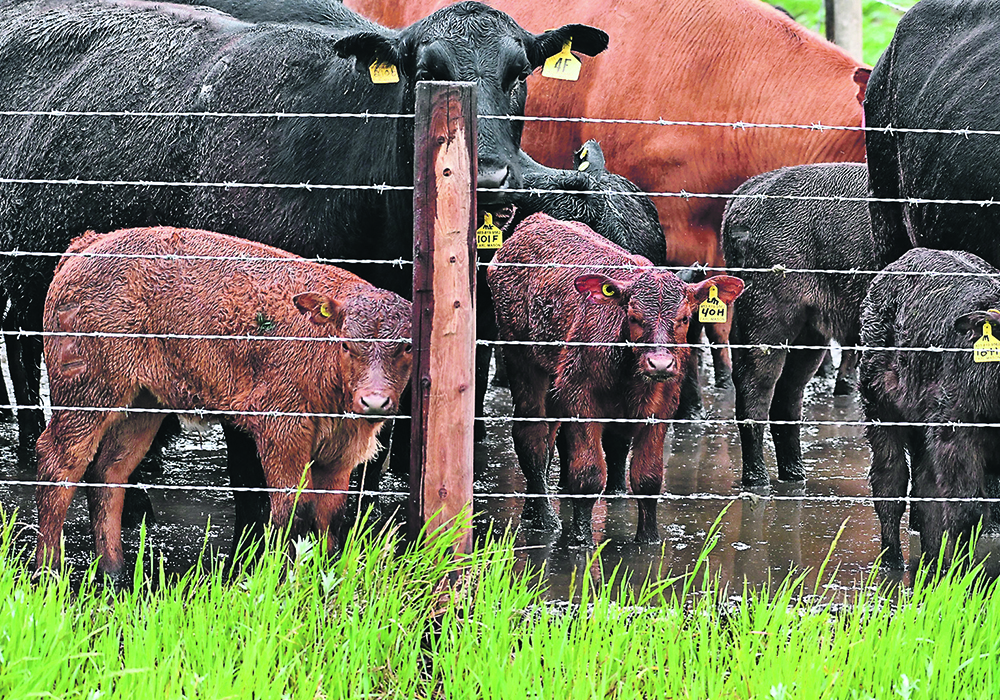Recent rains have come at a good time for many farmers in southern Alberta and western Saskatchewan, as a drenching precipitation switched the outlook from dire to hopeful over the course of a few days.
From Milk River, Alta., to Maple Creek, Sask., areas in the dry south have seen five to 10 times as much rain fall this June compared to last year, providing much relief to the sun-baked prairie.
SaskCanola chair Charlene Bradley isn’t quite ready to call the drought over but the recent turn in the weather has switched the perspective of some producers looking at a write-off, to anticipation the right weather at the right time might be a possibility.
Read Also

Farmers asked to keep an eye out for space junk
Farmers and landowners east of Saskatoon are asked to watch for possible debris in their fields after the re-entry of a satellite in late September.
There are also problems being faced by canola producers who are dealing with too much rain along the eastern stretch of Saskatchewan and Manitoba.
“I don’t think we could be at two different opposite ends,” said Bradley. “You’ve got Manitoba and the eastern part of our province completely saturated, and you’ve got west-central Saskatchewan into Alberta still quite dry,” she said.
Bradley said the recent rains that hit dry areas came in the nick of time.
“The crops had been seeded for three or four weeks and they were literally just sitting there,” said Bradley before rain hit those fields.
While there has been a greening up of canola crops, spraying has begun and the precipitation may help with flea beetles, the crop in the dry areas is still a couple of weeks behind and areas that have been hit with heavy rains have only just finished seeding, she said.
Phillip Harder, research associate at University of Saskatchewan’s Centre for Hydrology, said the recent rains may have helped but the deep sub-surface moisture levels have yet to recover.
Those moisture levels at those depths have remained uncharacteristically stable at research sites around Saskatoon, he said.
Those conditions will vary across different soil types and levels of precipitation.
“We were in a situation where we had moisture on the top of the soil profile where plant roots are right now,” he said, adding they are going to look good right now. “But this isn’t enough moisture to get you the most fabulous yield you ever had. This is enough to get it growing.”
Areas with heavy singular rain events will see some benefit but the soil won’t be able to absorb all the moisture, while those with multiple events spread out over time are reaping the best of the weather.
“We’ve had lots of rain but also a lot of runoff,” said Harder. “Seven inches of rain is better than no inches of rain, but the soil won’t be able to take it up.”
Harder said it’ll be tough to get the type of conditions that’ll lead to a recharge of deep sub-soil moisture levels this year in dry areas without seeing damaging events which have caused havoc in parts of Manitoba and eastern Saskatchewan.
Rosebud, Alta., wheat farmer Justin Bell said he’ll take what he can of the recent rains that have made for a 180-degree change from a gloomy outlook for producers in southern Alberta.
“We’ve got about four inches in the last two weeks roughly,” said Bell, who also serves as a director with the Alberta Wheat Commission. “Things have just turned around.”
Bell said farmers were about two weeks away from writing the fields off, “as there was just no moisture at all.”
Likely Bradley, Bell said he’s not ready to call the drought over but is anticipating the recent moisture and humidity will lead to more showers in the coming days.
“If the faucet gets turned off on us, at least we’ve achieved last year’s yields,” he said.
What’s going to be needed now is warmer temperatures, along with timely moisture, to make the year, Bell said.
“We’re maybe a touch behind where we should be. Now, if we can just get some moderate heat — nothing crazy hot — stuff will catch up quick because there is ample moisture there now,” he said.
For now, the rain has kept the grasshoppers in check and while Bell added this crop is going to be expensive, the high prices for cereals will help maintain farmers’ margins.


















